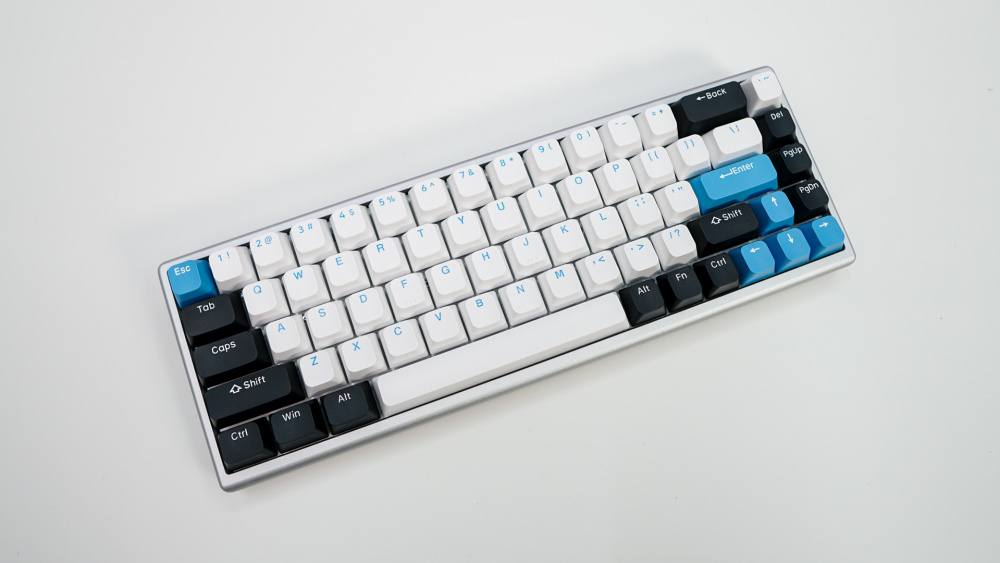Arbiter Studio Polar 65 Overview
The Polar 65 is of course a 65% keyboard as you would expect from the name. So you are going to get a total of 67 keys. If you are not familiar with 65% it is a more compact version of a tenkeyless keyboard, where you still get your arrow keys, but you do lose your entire function row. Unlike a full-on 60% keyboard you also retain the Del, Home, Page Up, and Page Down keys.
One of the first things that I noticed about this keyboard when I took it out of the box was how heavy it was, this is always a good sign when it comes to keyboards. The keyboard weighs in at 2.2lbs and that is mostly because of the CNC aluminum frame. Talking about that frame one thing I really like about this keyboard is that it is minimal, there is no extra space on the keyboard and the borders are very thin.
We received the Kumo Blue version of the keyboard that has a silver casing, mostly white keycaps with light blue legends, and then light blue and black accent keys. Overall the keyboard goes together quite well. Currently there are 9 different colorways available with both the silver and black casing. You can also get the keyboard as a barebones unit with either the black or white casing with the switches and then add your own keycaps.




When it comes to the keycaps you are going to get double-shot PBT keycaps in the KOP profile. The KOP profile is very similar to OEM. After using a keyboard with PBT keycaps you really can’t go back to ABS keycaps. PBT keycaps feel better overall and do not show wear or shine. Under the keycaps are Arbiter Studio’s Fuji Magnetic switches. These linear switches have an initial force of 36g, actuation range between 0.1mm and 3.8mm, 4mm of total travel, and a 100 million keystroke lifespan. These switches are hot-swappable with other hall effect magnetic switches. The switches as well as the stabilizers on this keyboard do come pre-lubed. Talking about the stabilizers the spacebar stabilizer actually screws into the PCB, while the other stabilizers on the keyboard are plate mounted.




On the top-edge of the keyboard you’ll find your USB-C connection which is on the left side.


Looking at the keyboard from the side we can see that it does sit at an angle by default. This is a good thing as there is no other height adjustment.
Flipping the keyboard over to the back we find a set of two rubber feet that extend the entire length of the keyboard. The bottom of the keyboard is actually made of silicon, which is slightly see-through. Arbiter Studio also makes use of PCBA silicon for dampening on the keyboard as well.






